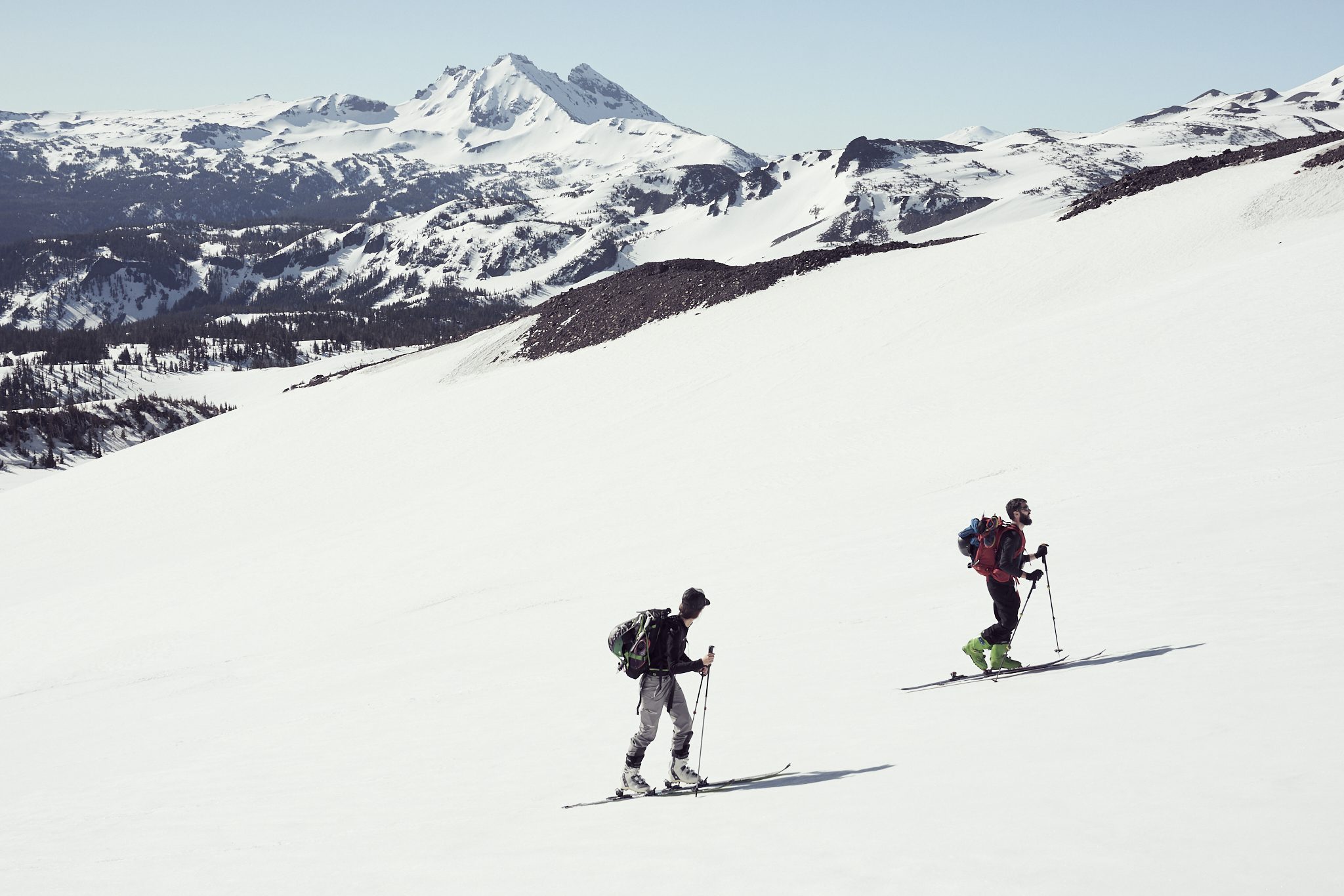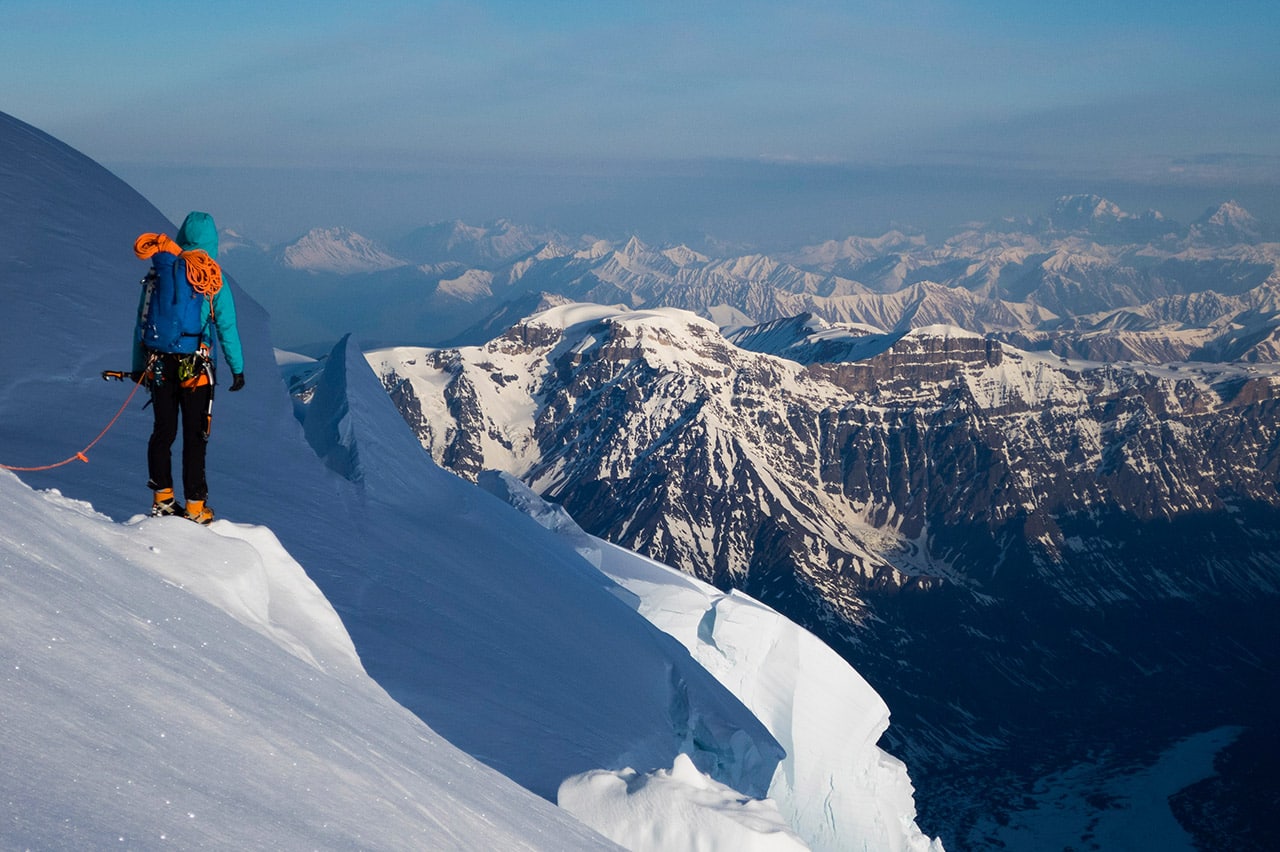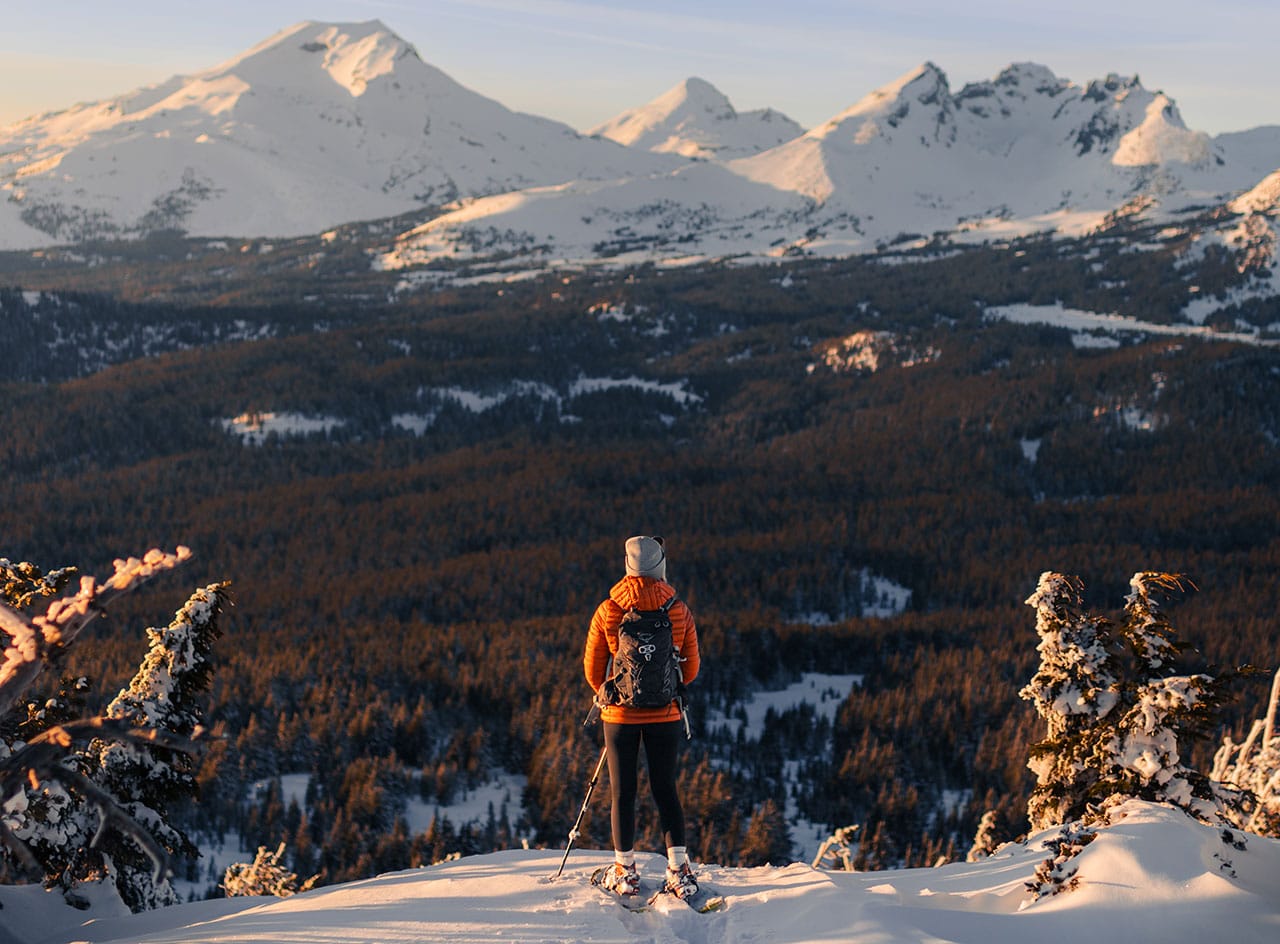Around Bend, people hear the term “backcountry” thrown around pretty often. Backcountry skiing, backcountry snowmobiling, backcountry snowshoeing… you get the idea. Bend’s backcountry is alive and well, with more people choosing to explore these areas than ever before. While breaking into the backcountry can be intimidating for beginners, backcountry enthusiasts swear by the experience and say that the freedom and the sense of exploration is unparalleled. Ready to get started?
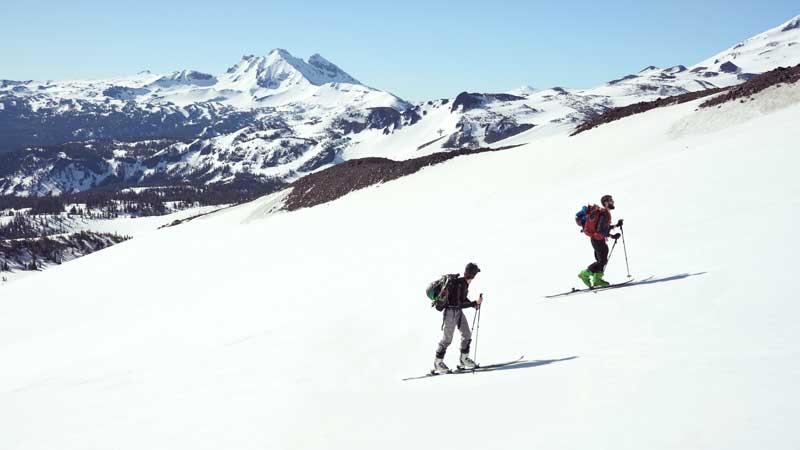
What is Backcountry?
A backcountry area is any area of wilderness that is sparsely populated, and undeveloped; this means fewer people, but also fewer resources, should someone need something like food, equipment or medical attention. Locally, there are three main backcountry areas that athletes, explorers and adrenaline junkies frequent: Tumalo Mountain, Three Sisters Wilderness, and Tam McArthur Rim.
“Those are the most popular backcountry areas around Bend,” said Zoë Roy, a development director on the board of directors with the Central Oregon Avalanche Center. “Splitboarding, ski touring and snowmobiling are the most popular activities, but snowshoeing and cross country skiing can be added as well.”
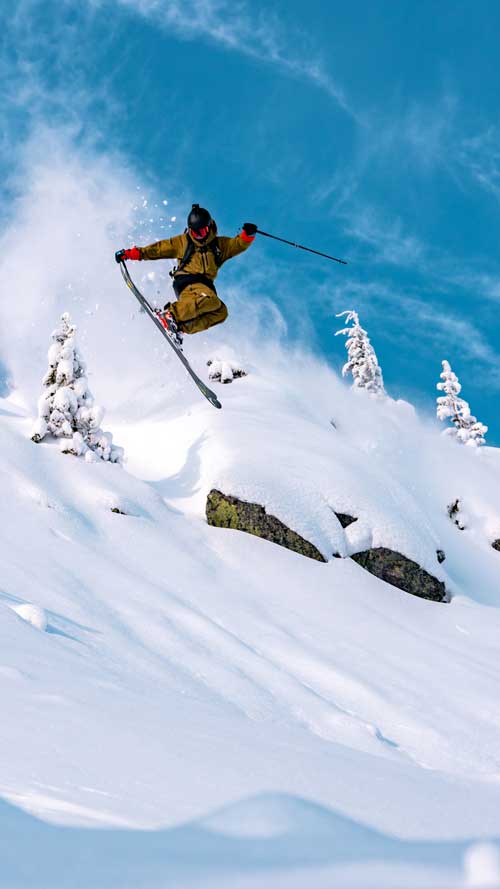
Skip the Resort
These popular backcountry activities can be accomplished in areas that are more developed and safer, like a ski resort, but to Roy and other backcountry enthusiasts, that doesn’t matter so much. The backcountry provides athletes more independence, a cheaper day-to-day cost, and way fewer face-to-face interaction with strangers. “The backcountry is an amazing alternative to resort skiing because there are fewer crowds and once you have the equipment, it’s free,” Roy said. “The backcountry is peaceful, beautiful and quiet, which I think more and more people are appreciating.”
Barry Wicks, the sports marketing director at Kona Bicycles, head consultant at Hella Sweet Ink, professional mountain biker and avid backcountry skier, echoes these statements. “I started skiing when I was 2, mostly terrorizing the mountain in what we referred to as the ‘Flying Wedge,’” Wicks said. After taking a skiing hiatus post-high school to focus on racing mountain bikes, Wicks got back into skiing when he moved to Bend in 2010. “I was pretty tired of riding chair lifts, and skiing in the backcountry gave me all the sensations I was familiar with and loved from riding mountain bikes: freedom, a sense of adventure and exploration, and escape from the crowds.”
Ok, I’m In! Where Do I Stay?
As exciting as the backcountry might sound, there are some barriers for people wanting to join in the action. Finding lodging can be one of these barriers, but it can also create another excuse for adventure. Tent camping in the backcountry, especially during winter, should only be done by those with experience and the proper equipment. The temperatures at night can easily drop below freezing and into the negatives, so staying warm and bundled up is essential, and will require having gear that is tested and approved for extremely low temperatures. The safest way to camp overnight would be in a camper or RV, staying at one of the nearby sno-parks. Kapka and Wanoga Sno-Park both have overnight RV camping spots available, and both of them can access the backcountry through skiing and snowmobiling trails. Renting a cabin is also a great alternative, with a few options offered locally.
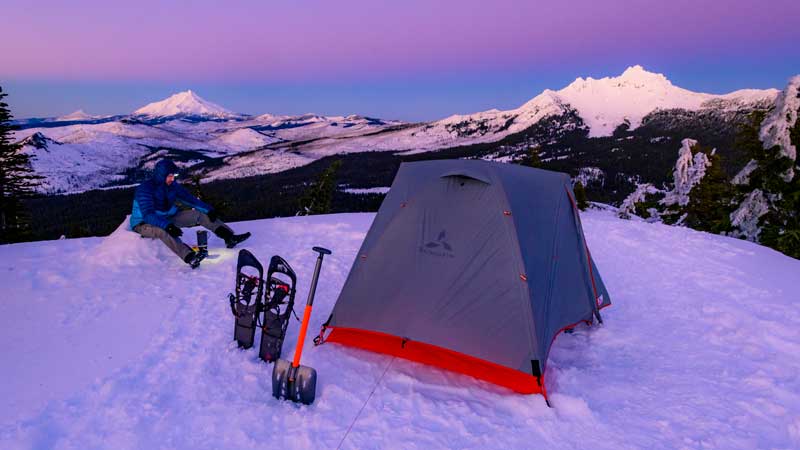
Nordic ski huts are available in the Three Sisters Wilderness area, and there’s even a guided, multi-day ski tour that has guests staying in the huts. Yurts are available for private rentals as well, in the same area. A bit closer to Bend but still near the action, the winter cabin rentals at Elk Lake resort offer a bit of mountain luxury to any backcountry experience.
However, the most popular choice of lodging is your own bed. Many backcountry enthusiasts opt to start their day in their own home and hit the sno parks early, around 5 a.m, then drive back home before nightfall to avoid the hassle of winter lodging. Out-of-towners should consider renting a spot for the weekend in Bend, Redmond or Sunriver.
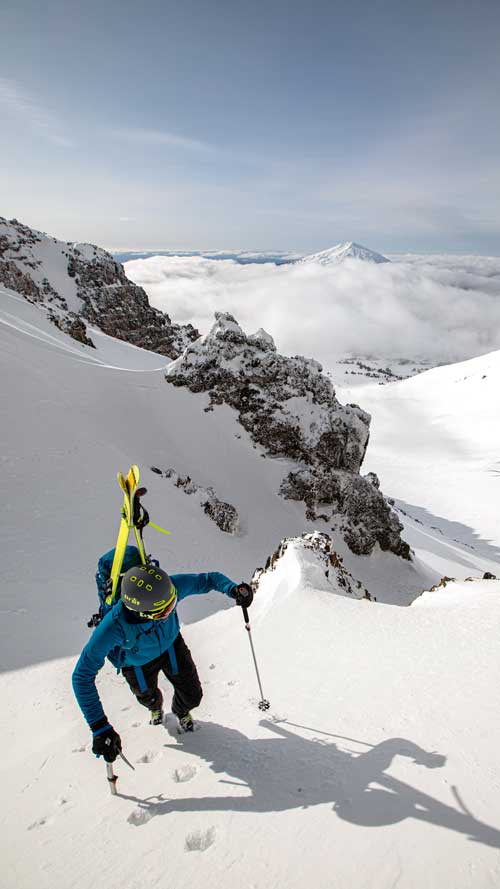
Safety First
It is crucial to remember that backcountry sports have little to no safety net. Crashing on skis and injuring yourself on Mt. Bachelor property will get you an express ticket to the bottom of the mountain via mountain rescue and a snowmobile. Injuries in the backcountry don’t have the luxury of a quick rescue, and that is why it is so important that backcountry athletes have experience in their sport and an understanding of their own limits.
Skiing at a resort means that the runs have been groomed, tested and ranked based on their difficulty. The backcountry won’t have that, so athletes must determine what is safe and what isn’t, on their own.
The biggest safety concern in the backcountry is avalanches, especially when using a snowmobile. “More people are using snowmobiles to get farther and faster into the backcountry,” Roy said. “This is awesome, but also important to remember that snowmobiles can travel in avalanche terrain and sometimes they break down. Be prepared for both scenarios!”
This writer remembers backcountry snowmobiling growing up in Bend, and dozens of times where it felt like we spent more time digging the snowmobiles out of deep powder than we did riding them. Lesson learned, backcountry athletes always need to be prepared to get themselves out of a bind, especially avalanches; we would never leave the house without a shovel, a handsaw, food, water, extra layers and medical supplies.
“It’s so important that people are heading into the backcountry with the correct avalanche equipment,” Roy said. “It’s one thing to carry an avalanche beacon, shovel and probe, it’s a whole different thing to know how to use them. Education is just as important!”
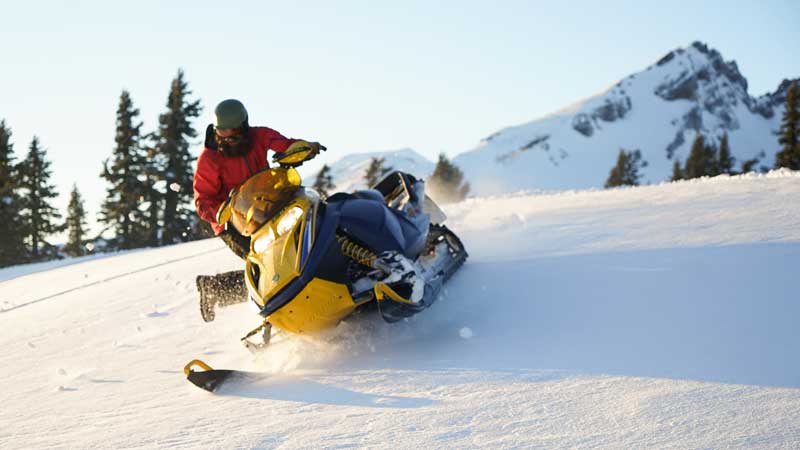
On safety, Wicks said, “I’ve taken avalanche classes, spent time with backcountry wizards, and I try hard to be a student of the mountains, paying attention all the time to changing conditions, terrain and weather.” Wicks also recalls a moment where an avalanche took a member of his skiing party, and quick action led to a rescue without incident. “Being in the backcountry can be scary, but it does not have to be,” Wicks said. “Wise decision making and conservative choices can help mitigate risk, but I always have the mindset that anything can happen at any time, and I try to be ready for any eventuality as best I can.”
Three Sisters Backcountry, Oregon Ski Guides and Central Oregon Community College all offer multi-day avalanche education courses. Central Oregon Avalanche Center hosts free, monthly refresher classes that are a good place to brush up on, or begin, your education.



